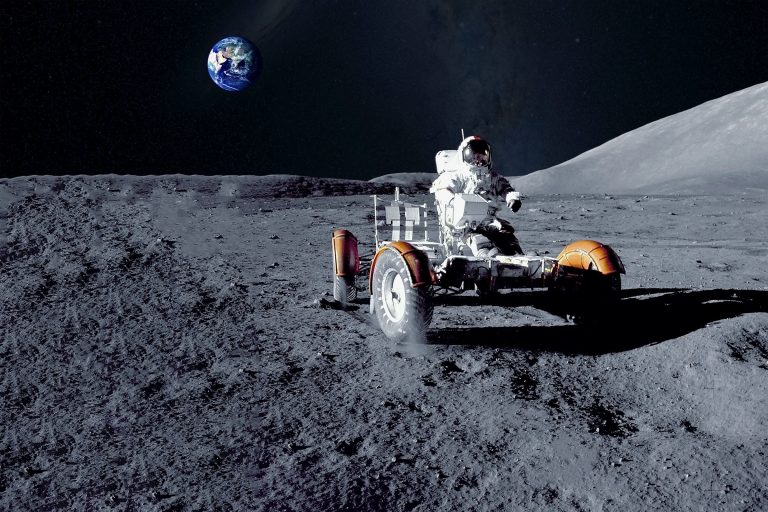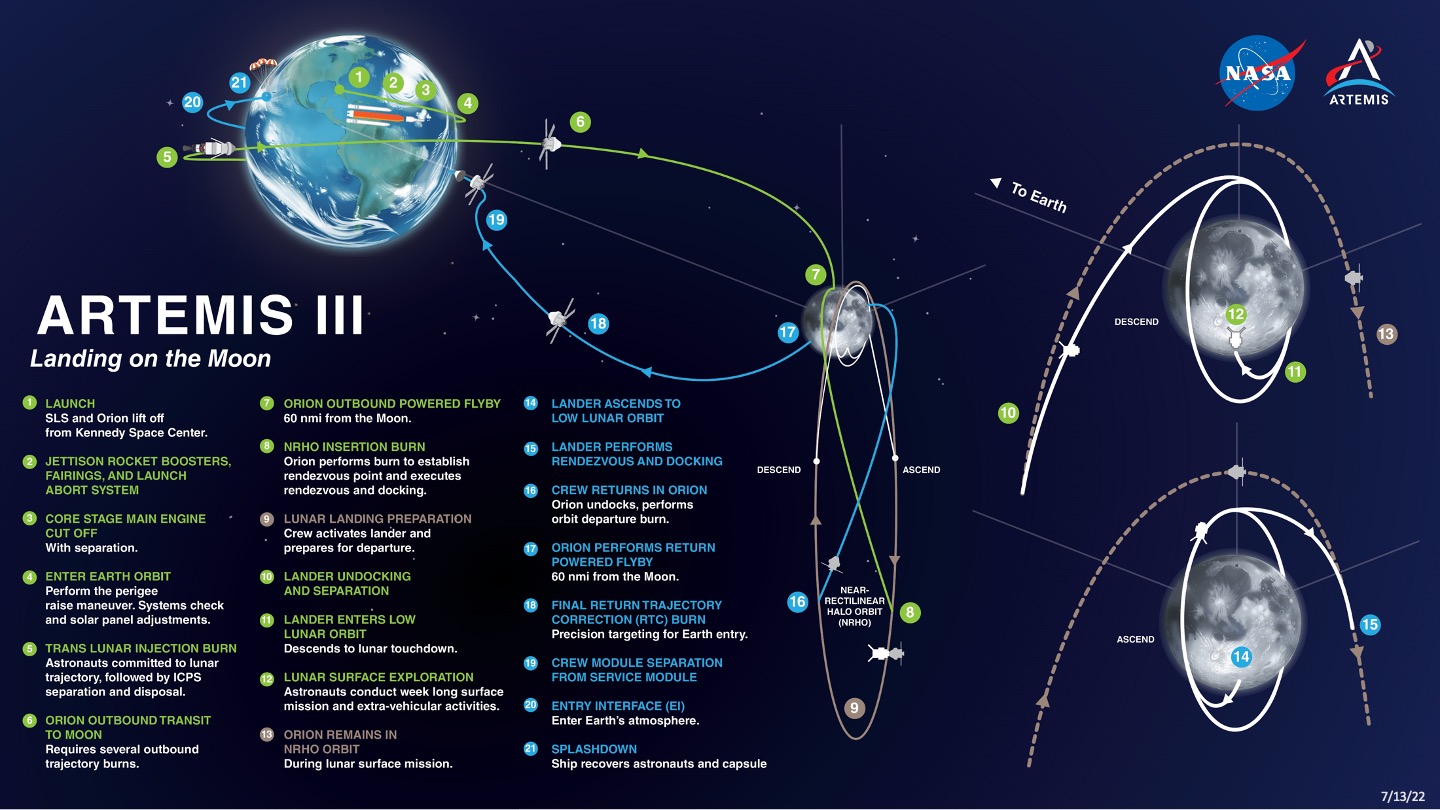Everything we know about NASA’s return to the Moon
This decade is a huge one for space exploration. Not only has NASA already seen amazing success with the launch of Artemis I, which tested the Orion space capsule’s capabilities, but the Artemis II mission is already gearing up, too. And, in just a few years, humans will return to the Moon with the Artemis III mission.
Despite still being a few years away, NASA has shared a significant amount of information about its plans for humanity’s return to the lunar surface. Here’s everything we know about NASA’s highly anticipated Artemis III mission.
Utilizing Starship: While the launches of Artemis I and even 2024’s Artemis II will rely on NASA’s SLS rocket, the space agency plans to transition to SpaceX’s highly anticipated Starship two-stage rocket for Artemis III. Starship recently experienced its first launch test, which ended in a blazing ball of fire.
Landing zones: One of the most notable points about the first Artemis mission to take humanity back to the Moon’s surface is that we aren’t just returning to where other astronauts have already been. Instead, Artemis III will deliver astronauts to the lunar south pole.
The southern pole is one of the most unexplored regions of the Moon. NASA has already shared some possible landing zones for the Artemis missions, which could one day be home to a proper moon base where astronauts live and work.
Next-generation space suits: It’s no secret that NASA astronauts have been utilizing old-school space suits on the International Space Station for the past several years. However, NASA has partnered with Axiom Space to create a next-generation space suit designed to make mobility even better on the Moon.
These new space suits have already been unveiled, and NASA astronauts will use them on future Artemis missions.
Mission map: While NASA has yet to reveal any kind of crew for Artemis III, the space agency has given us an idea of what to expect once the mission launches later this decade. The mission map is outlined in an image, which we’ve embedded above.
As one of the most anticipated missions of the decade, Artemis III has a lot of hype to live up to, and it will no doubt deliver on all of that hype when those four astronauts find themselves settling down on the Moon’s surface to begin the next era of space exploration in person.
Inclusivity at its core: Another big sticking point of the Artemis III mission is that NASA has promised it will be the first mission to put a woman and a person of color on the Moon’s surface. It’s a huge accomplishment that will hopefully continue breaking down industry barriers for future missions.

A new moon rover: Another thing to look forward to when Artemis III lands on the Moon is the addition of a next-generation moon rover. Currently, Lockheed Martin and LunarOutpost are working to create a revolutionary new moon rover, though other companies are involved in creating other options.
Launch window: NASA has yet to share an exact launch window for the third Artemis mission; however, the space agency is currently aiming for a 2025 launch window. The second Artemis mission is slated to launch sometime in 2024, and it is waiting to see how that mission fairs before putting a final date on things.
What NASA is waiting on: Artemis I might have been successful, but the space agency is still waiting to see how the first crewed Artemis mission goes. Additionally, it still needs to ensure that Axiom’s space suits are ready for the Moon, and there is still work on Starship to prepare it for taking over.
If, for some reason, Starship cannot deliver as NASA’s human landing system, then the space agency may need to pivot to something else before the Artemis III mission can take place.
This decade is a huge one for space exploration. Not only has NASA already seen amazing success with the launch of Artemis I, which tested the Orion space capsule’s capabilities, but the Artemis II mission is already gearing up, too. And, in just a few years, humans will return to the Moon with the Artemis III mission.
Despite still being a few years away, NASA has shared a significant amount of information about its plans for humanity’s return to the lunar surface. Here’s everything we know about NASA’s highly anticipated Artemis III mission.
Utilizing Starship: While the launches of Artemis I and even 2024’s Artemis II will rely on NASA’s SLS rocket, the space agency plans to transition to SpaceX’s highly anticipated Starship two-stage rocket for Artemis III. Starship recently experienced its first launch test, which ended in a blazing ball of fire.
Landing zones: One of the most notable points about the first Artemis mission to take humanity back to the Moon’s surface is that we aren’t just returning to where other astronauts have already been. Instead, Artemis III will deliver astronauts to the lunar south pole.
The southern pole is one of the most unexplored regions of the Moon. NASA has already shared some possible landing zones for the Artemis missions, which could one day be home to a proper moon base where astronauts live and work.
Next-generation space suits: It’s no secret that NASA astronauts have been utilizing old-school space suits on the International Space Station for the past several years. However, NASA has partnered with Axiom Space to create a next-generation space suit designed to make mobility even better on the Moon.
These new space suits have already been unveiled, and NASA astronauts will use them on future Artemis missions.

Mission map: While NASA has yet to reveal any kind of crew for Artemis III, the space agency has given us an idea of what to expect once the mission launches later this decade. The mission map is outlined in an image, which we’ve embedded above.
As one of the most anticipated missions of the decade, Artemis III has a lot of hype to live up to, and it will no doubt deliver on all of that hype when those four astronauts find themselves settling down on the Moon’s surface to begin the next era of space exploration in person.
Inclusivity at its core: Another big sticking point of the Artemis III mission is that NASA has promised it will be the first mission to put a woman and a person of color on the Moon’s surface. It’s a huge accomplishment that will hopefully continue breaking down industry barriers for future missions.

A new moon rover: Another thing to look forward to when Artemis III lands on the Moon is the addition of a next-generation moon rover. Currently, Lockheed Martin and LunarOutpost are working to create a revolutionary new moon rover, though other companies are involved in creating other options.
Launch window: NASA has yet to share an exact launch window for the third Artemis mission; however, the space agency is currently aiming for a 2025 launch window. The second Artemis mission is slated to launch sometime in 2024, and it is waiting to see how that mission fairs before putting a final date on things.
What NASA is waiting on: Artemis I might have been successful, but the space agency is still waiting to see how the first crewed Artemis mission goes. Additionally, it still needs to ensure that Axiom’s space suits are ready for the Moon, and there is still work on Starship to prepare it for taking over.
If, for some reason, Starship cannot deliver as NASA’s human landing system, then the space agency may need to pivot to something else before the Artemis III mission can take place.
